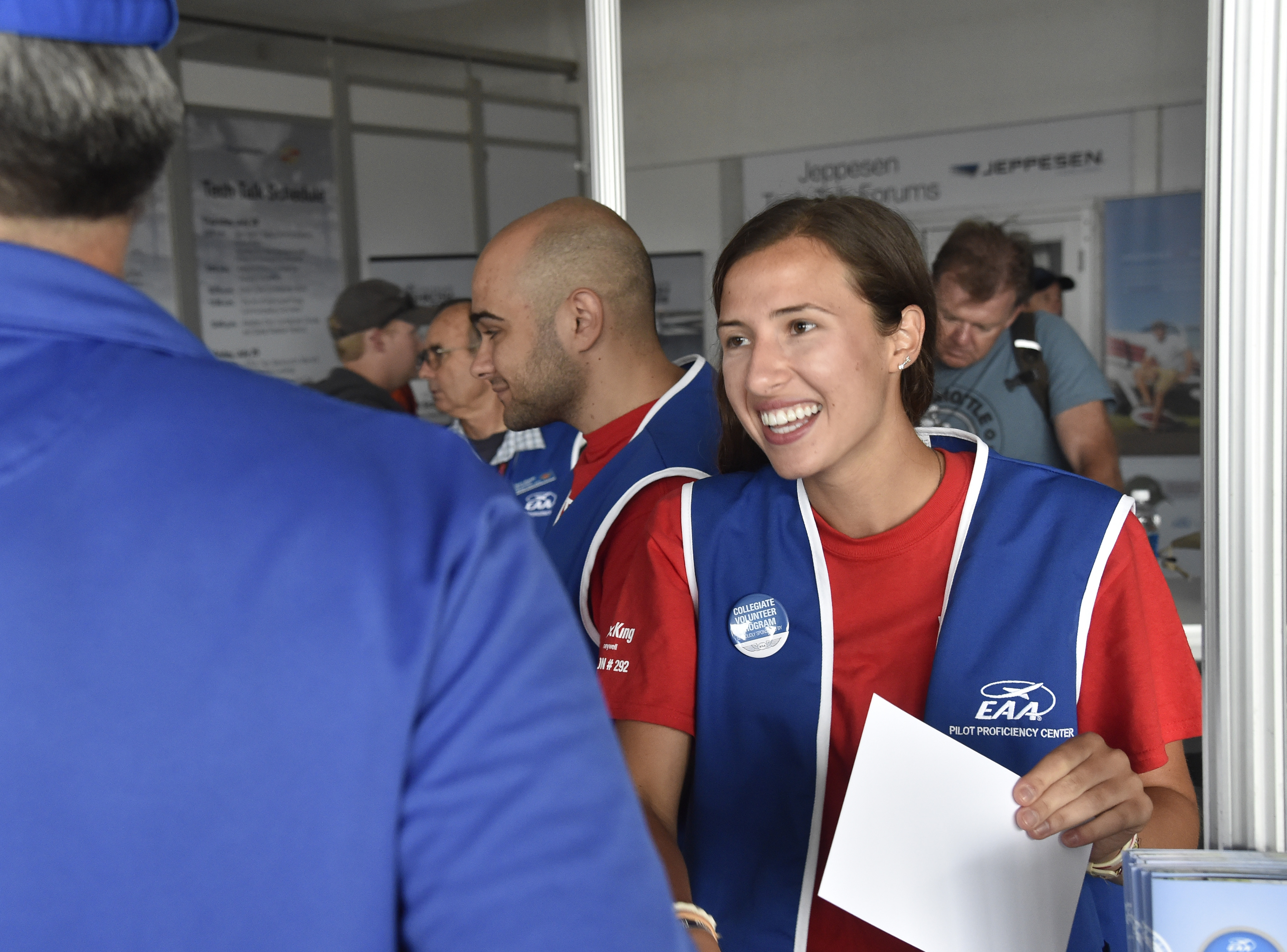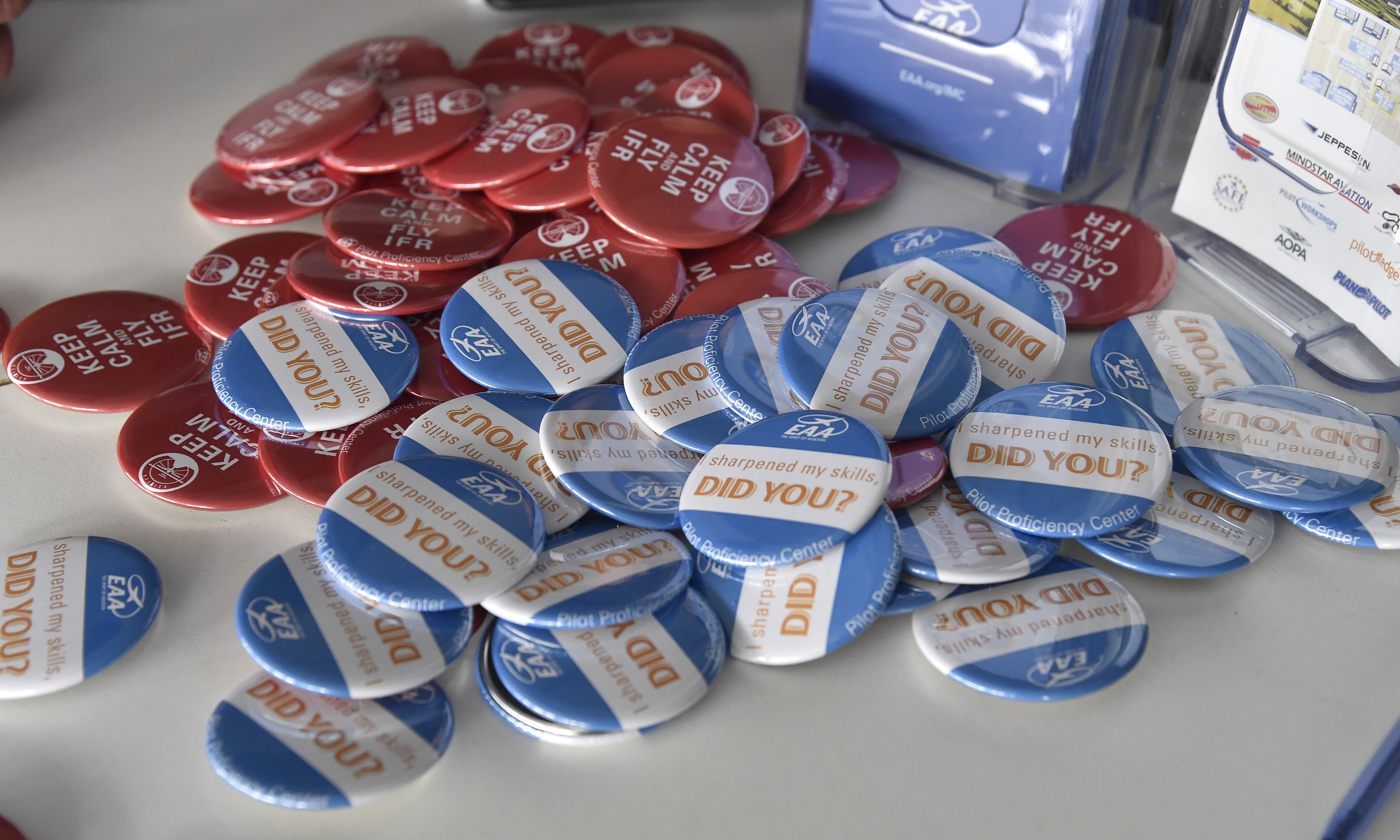AirVenture's Pilot Proficiency Center is the real deal
The Experimental Aircraft Association’s free proficiency center experienced steady traffic pouring through its door as pilots chose to sharpen their skills on the sims or participate in nearly 30 Tech Talks as varied as backcountry approaches, chart clinics, and “Weather for Dummies.”

In the simulator room, pilots had a full smorgasbord to choose from. They could battle Redbird’s Winging It video host Brittany Miculka, who showed her skill at navigating Washington, D.C.’s complicated airspace for an imaginary photo flight, or they could take on the aptly named SID Vicious IFR departure procedures out of Teterboro, New Jersey. The PPC preparation sheets called the departure “the single most violated SID in the country.”
National Association of Flight Instructors and Society of Aviation and Flight Educators members coached and debriefed participants whether they were interested in challenging themselves or just maintaining currency.
“This is my favorite thing to do in the whole show,” said instrument-rated pilot Larry Overstreet. “Every year it gets better.”

He complimented EAA and its pilot proficiency center partners AOPA, Jeppesen, and Hartzell Propeller, for making his life easier.
“If I can get six approaches and a hold in and push the calendar out, that’s great,” said the Milwaukee-based pilot who added that the price was right, too. The PPC was free to EAA attendees.
Instructor Jason Archer was a beehive of activity as he ushered a flatlander VFR student into a full-motion device for a taste of life in the high mountains of Idaho.
“You take someone, put them into a simulator and then they’re a kid again,” he said as he flipped a couple of switches to produce a short, grass strip bordered by menacing terrain at a high elevation on a high-density-altitude day.
The East Coaster handled the runup and taxi to the simulated backcountry airstrip adequately but not expertly, and adjusting the mixture to a best-power setting two finger-widths out from full-rich earned a nod of approval from Archer.

However, choosing 20 degrees of flaps and full back pressure, a scenario familiar to student pilots simulating short takeoffs from asphalt runways, simply did not work. The Cessna 172 waddled down the airfield like a lost duck, and the Lycoming struggled for airspeed and altitude.
“Don’t stop flying now,” Archer implored as large rocks depicting the end of Runway 17/35 loomed in the windscreen, “take it all the way through the crash.” Archer’s advice was on the money as the little Cessna leapt over the obstacle before settling into a forested creek bed that would have severely damaged the real thing.
“OK, let’s try it again,” said Archer, a CFI in Connecticut. “But this time, no flaps, gentle back pressure and get flying. Build airspeed in ground effect, and then see what you can do,” he coached.
Sure enough, the 172 lifted off at midfield from Johnson Creek Airport’s turf runway while the simulator rocked and rolled through a narrow valley that tested airmanship in a setting realistic enough to be remembered for a lifetime.

Archer said pushing pilots to their limits in a simulated environment, along with good coaching and the time to adequately explain procedures, increases their confidence, situational awareness, and aircraft management.
The popularity of the proficiency center’s one-on-one sim-based flight instruction and its technical talks was satisfying to Jack Pelton, EAA’s CEO and chairman. He said the PPC was a “cornerstone activity” for the association and hinted at its improvement for future AirVentures. Pelton said, “Our goal was to have 5,000 through the center,” and the Tech Talks were sellout crowds, “so I think we are onto something.”
As flight instructor Archer hurried from station to station helping pilots with spec sheets, charts, and approach plates he explained the program’s appeal. “I ask them, ‘What did you learn and how can we do it better?’ because we’re not all perfect. Now you’ve got a deeper understanding and you’ve been challenged, too. And besides, where else can you land on an aircraft carrier?”





